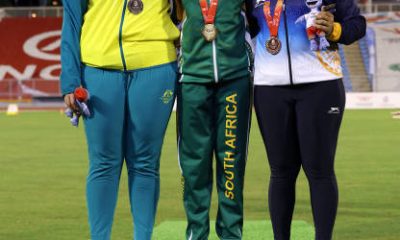
In recent years, women’s sports in India have made significant strides, breaking barriers and shattering stereotypes. Yet, despite the growing accomplishments and the increasing visibility of female athletes, women’s sports in India still do not receive the same level of recognition or support as their male counterparts. The underrepresentation of women in sports, limited access to resources, and the pervasive gender biases are factors that contribute to this disparity. This post delves into why Indian women’s sports deserve more recognition and explores the challenges and opportunities that lie ahead.
The Growing Impact of Indian Women in Sports
Indian females have been excelling in sports for decades, but it is only in recent years that their achievements have started to gain the spotlight. From Mary Kom’s six world boxing titles to P.V. Sindhu’s historic Olympic silver medal, Indian women athletes have showcased immense talent and resilience on the global stage. Mithali Raj, the legendary cricketer, has been a trailblazer for women’s cricket in India, while Saina Nehwal has elevated Indian badminton to new heights.
These achievements are not isolated incidents but part of a larger movement where female athletes are increasingly challenging societal norms and proving that they are capable of competing at the highest level. Despite these accomplishments, women’s sports continue to struggle for equal recognition, financial support, and media attention.

The Gender Gap in Indian Sports
In India, sports have traditionally been dominated by men. Historically, women were discouraged from participating in physical activities and sports, as they were often seen as a “man’s world.” This deep-rooted cultural bias has continued to hinder the progress of women’s sports. Even though there has been some change in recent years, the journey remains difficult.
1. Underrepresentation in Media
One of the most significant barriers to the recognition of women’s sports is the lack of media coverage. Men’s sports, particularly cricket, dominate the sports media landscape in India. Women’s sporting events often receive minimal airtime, and when they do, it is often brief and limited to major events like the ICC Women’s World Cup or the Commonwealth Games.
This lack of media coverage prevents women’s sports from gaining widespread recognition and a dedicated fanbase. The absence of consistent visibility makes it difficult for athletes to build a profile and attract sponsorship deals or endorsement opportunities.

2. Unequal Pay and Sponsorship
The gender pay gap is another pressing issue in Indian women’s sports. Male athletes, especially those in cricket, football, and badminton, enjoy hefty endorsements, lucrative sponsorship deals, and significant match fees. On the other hand, female athletes often receive minimal financial backing, making it harder for them to sustain long-term careers.
For instance, although Indian women’s cricket has become more popular over the past few years, the pay disparity between male and female cricketers is substantial. The Indian female cricket team, despite their impressive performances, earn much less than their male counterparts in terms of match fees and endorsements. This pay gap reflects the overall disparity between male and female athletes in India.
3. Lack of Infrastructure and Training Facilities
The disparity in training facilities and infrastructure for female sports also limits their development. Most sports infrastructure in India, whether at the grassroots or elite level, has been designed to cater to male athletes. Females, therefore, often have limited access to quality training centers, gym facilities, and equipment.
In rural areas, where access to sports facilities is already limited, girls often face additional challenges. Without proper infrastructure and resources, it becomes increasingly difficult for aspiring female athletes to develop their skills and pursue sports professionally.
The Benefits of Supporting Women’s Sports
Recognizing and supporting women’s sports in India would have far-reaching social, economic, and cultural benefits.
1. Empowering Women and Challenging Gender Stereotypes
When women excel in sports, they break down longstanding gender stereotypes and empower other women to follow suit. The visibility of successful women athletes in India encourages young girls to pursue sports and challenge the norms that have historically confined them to domestic and caregiving roles. Female athletes, in their respective fields, become role models for young females and girls, teaching them the value of determination, resilience, and self-belief.
2. Boosting the Nation’s Global Sports Reputation
In recent years, Indian women’s athletes have proven that they can compete at the highest level. Achievements in sports like wrestling, boxing, badminton, and athletics have brought India international acclaim. Increasing the recognition and support for these athletes could lead to even more success, which in turn would help elevate India’s global sporting reputation.
For instance, PV Sindhu’s rise in the world of badminton and Mithali Raj’s incredible career in cricket have already made India proud. With the proper support, other athletes can follow in their footsteps, achieving even more success on the global stage.
3. Inspiring Young Girls and Creating Role Models
One of the most crucial ways in which women’s sports can impact society is by inspiring young girls. When they see their idols competing at the highest level, they feel more motivated to pursue their own dreams in sports. This can have a ripple effect, where a new generation of female athletes emerges, further strengthening the sports ecosystem in India. Additionally, these athletes become symbols of resilience and strength, offering females an alternative to traditional career paths and inspiring them to break boundaries.
What Needs to Change: Steps to Achieving Greater Recognition for Women’s Sports
For Indian women’s sports to achieve the recognition they deserve, several key changes need to occur at the grassroots, national, and institutional levels.
1. Increased Media Coverage
One of the first steps in achieving recognition for female sports is greater media visibility. Media outlets, both traditional and digital, must commit to offering more coverage of women’s sporting events. This includes broadcasting games live, providing in-depth analysis, and telling the stories of athletes beyond the playing field.
2. Gender-Neutral Pay and Sponsorship Models
Equal pay for equal work is a crucial element in recognizing the value of female athletes. Sports organizations and sponsors must develop gender-neutral pay structures that ensure women athletes receive fair compensation for their efforts. This will not only help bridge the financial gap but also send a strong message about the importance of supporting women in sports.
SUGGESTED POSTS
Aditi Ashok Impresses at Founders Cup with Strong Finish, Sets Sights on Saudi Ladies International
3. Improving Infrastructure and Training Facilities
Investing in infrastructure and providing better training facilities for female athletes is essential for the development of female sports in India. This includes building women-specific sports complexes, providing access to high-quality coaching, and ensuring that female athletes have the same resources and opportunities as their male counterparts.
4. Encouraging Grassroots Development
Grassroots programs play a vital role in identifying and nurturing young talent. By promoting sports participation among young girls, especially in rural and underserved areas, India can ensure a steady pipeline of future athletes. Initiatives that encourage schools and local communities to engage girls in sports will create a more inclusive sporting culture from the ground up.
CHECK OUT TOP 3 FREE BETTING PREDICTION SITES
Accuratepredict.com Soccerpredictions.net Betloy.com
Conclusion
Indian female sports have come a long way, and the achievements of athletes like Mary Kom, Saina Nehwal, and Dutee Chand demonstrate that women have the potential to compete at the highest levels. However, for Indian women’s sports to truly thrive and achieve the recognition they deserve, there must be a collective effort to provide equal opportunities, improve visibility, and break down gender barriers. It is only through concerted action and support from all sectors—media, government, institutions, and the public—that female sports in India can reach their full potential.









